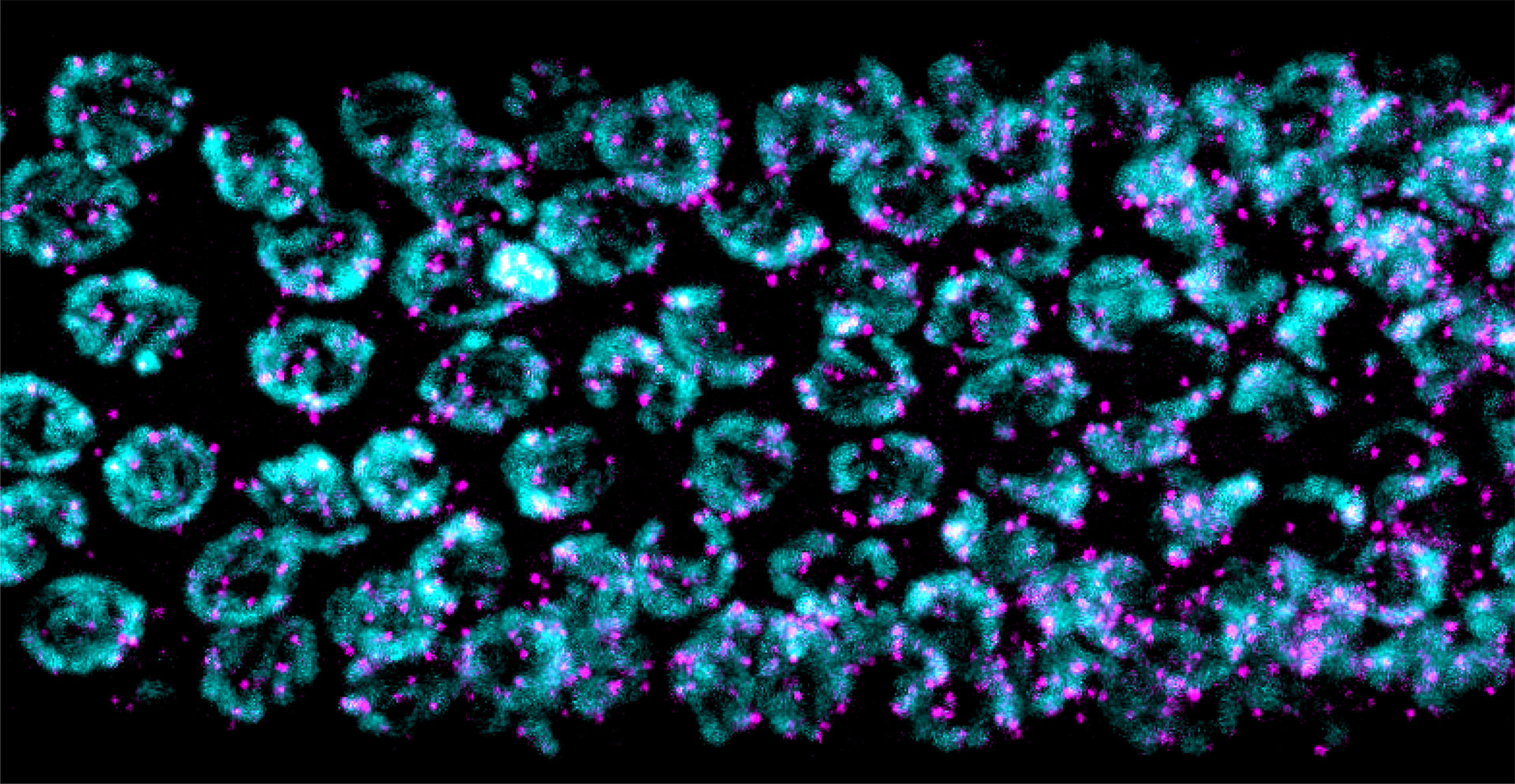Björn Schumacher, Siyao Wang
Epigenetic regulation of the cellular homeostasis amid transcription-blocking DNA damage during development and aging
Persistent DNA lesions can block replication and transcription thus disrupting cellular homeostasis consequently impairing development and accelerating aging. The molecular mechanism underlying the pathological consequences of DNA damage in the developing and aging organism are incompletely understood. We have previously developed a C. elegans model as simple metazoan system for investigating the physiological aberrations caused by DNA damage during development and the course of aging in a live organism. We recently identified a specific role of a epigenetic modification, H3K4me2, in the recovery of the expression of genes involved in protein biosynthesis and homeostasis following the repair of transcription-blocking DNA lesions. Manipulating the deposition of H3K4me2 through depleting H3K4me2 methyltransferases and demethylases influences the developmental growth and aging upon UV-induced DNA lesions. While a failure to deposit this specific mark was detrimental, elevated H3K4me2 levels facilitated the recovery of protein biosynthesis and subsequently promoting developmental growth and longevity. We hypothesize that the deposition of a specific DNA repair-dependent histone mark regulates the organism’s ability to survive amid DNA damage through the regulation of protein biosynthesis and homeostasis. The effects of this H3K4me2 deposition along open reading frames allows us to develop a paradigmatic connection between DNA damage, epigenetics, transcription elongation and protein homeostasis that are all intricately involved in the aging process.
We will investigate how transcription-blocking DNA damage reshapes the epigenome and impacts developmental growth and aging. We will shed light on the mechanistic underpinnings how epigenetic modifications maintain organismal homeostasis amid genotoxic stress. We aim to uncover the mechanisms of the recruitment of the MLL-COMPASS complex that deposits the H3K4me2 marks along specific open reading frames and how this is related to transcription stalling and TC-NER. We wish to understand how the H3K4me2 deposition regulates the recovery of transcription elongation following transcription blocking lesion removal. Lastly, we will employ the powerful genetics of C. elegans to investigate how longevity associated regulators of protein biosynthesis and epigenetics impact the organism’s response to DNA damage.
Taken together, we aim to shed new light on how epigenetic maintenance of chromatin structure and gene expression regulates the physiological adaptations of the developing and aging organism to DNA damage.

PROJECT RELATED PUBLICATIONS
- Wang, S., Meyer, D. H., & Schumacher, B. (2020). H3K4me2 regulates the recovery of protein biosynthesis and homeostasis following DNA damage. Nature Structural & Molecular Biology, 27(12), 1165-1177.
- Soltanmohammadi, N., Wang, S., & Schumacher, B. (2022). Somatic PMK-1/p38 signaling links environmental stress to germ cell apoptosis and heritable euploidy. Nature communications, 13(1), 1-13.
- Wang, S., Meyer, D.H. and Schumacher, B., 2022. Inheritance of paternal DNA damage by histone-mediated repair restriction. Nature, pp.1-10.


